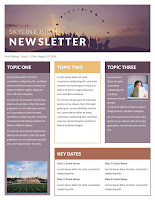If we try to classify customers in various types,
we can have say that there are 5 Types of Customers. We are constantly trying to find new customers for
our business.
We try to make sure that all our marketing activities like advertisements, displays, and even pricing are designed to attract new business.
We try to make sure that all our marketing activities like advertisements, displays, and even pricing are designed to attract new business.
This focus on finding new
customers is certainly necessary, but, at the same time, it can cost us
fortune. So as a first step, our focus should really be on 20 percent of our
clients who currently are most loyal to our business.
This
idea of focusing on the best customers currently should be an on-going process.
To better understand the rationale behind this, we need to categorize customers
into five main types:
Loyal
Customers: They are not more than 20
percent of our customers, but give us more than 50 percent of our sales.
Discount
Customers: They shop with us quite frequently,
but their decisions are based on the discounts or schemes we offer.
Impulse
Customers: They do not have any particular
product in their mind. They do look out for products. They purchase what appeals
to their mind at some moment.
Need-Based
Customers: They have a well defined
need and buy a product which completely fits in to their need.
Wandering
Customers: They have no specific need
or desire in mind when they go out to market. Rather, they want a sense of
experience and/or community.
If
we are serious about growing our business, we need to focus our effort on the
loyal customers and merchandise our store/outlet to attract the impulse
shoppers. The other three types of customers also matter to our business, but by
putting too much emphasis on them, we may make our marketing campaigns or
pricing strategies mis-directional.
Let
me further elaborate the five types of customers and what we should be doing
with them.
Loyal Customers
Naturally, we need to be communicating with these
customers on a regular basis by telephone calls, messages, email etc. These
people are the ones who can and should influence our buying and merchandising
decisions. Nothing will make a Loyal Customer feel better than taking their
input and showing them how much you value it. In my mind, you can never do
enough for them. Many times, the more you do for them, the more they will
recommend you to others.
Discount Customers
This category helps ensure your leftover inventory gets
sold and, as a result, are a key contributor to cash flow. This same
group, however, can often effect your costing as you will be trying to attract
them by offering heavy discounts, thus bringing your pricing down.
Impulse Customers
Clearly, this is the segment that we all like to
serve. There is nothing more exciting than promoting a product to an Impulse
shopper and seeing them respond favorably to our recommendations.
We want to target our displays towards this group
because they will provide us with a significant amount of customer insight and
knowledge.
Need-Based Customers
People in this category are driven by a specific
need. When they enter store/outlet, they will try to see if they can have their
need filled quickly. If not, they will leave. They buy for a variety of reasons
such as a specific occasion, a specific need, or a price which meets their
criteria for product. It can be difficult to satisfy these people. But they can
also become Loyal Customers if they and their needs are well taken care of.
Salespeople may not feel very good to serve, but, in the end, they can often become
your greatest source of long-term growth.
It is important to note that Need-Based Customers
can very easily get diverted to online sales or a different retailer. To
overcome this threat, positive personal interaction is required, usually from
one of your top sales professional. If they are attended to their satisfaction
and better than another retailer, there is a very strong chance of these
becoming your Loyal Customers. For this reason, Need-Based Customers offer the
greatest long-term potential, surpassing even the Impulse segment.
Wandering Customers
For many reasons, this is the largest segment in
terms of traffic, while, at the same time, they make up the smallest percentage
of sales. There is nothing much you can do about this group because the number
of Wanderers you have is driven more by your store location than anything else.
Keep in mind, however, that although they may not
represent a large percentage of your immediate sales, they are a real voice for
you in society. Many Wanderers shop merely for the sake interacting with others
and pass time. Since they are fond of for interacting with others, they are
also very likely to communicate to others the experience they had with you.
Therefore, although Wandering Customers cannot be ignored, the time spent with
them needs to be minimized.
Selling
is an art, backed up by science. The science is the information we have from various
research data. The art is in how we work & behave on the floor, our
merchandising, our people, and, ultimately, our customers. Competition pressure
is increasing and it is only going to become more difficult to sell in days to
come. To be successful, we will require patience, understanding our customers
and the behavior patterns that drive their decision-making process.






















